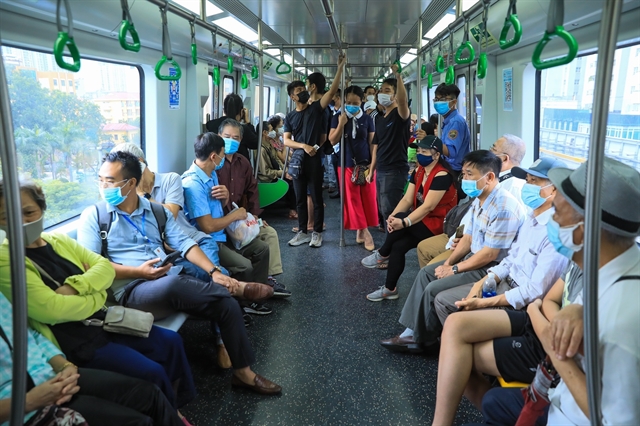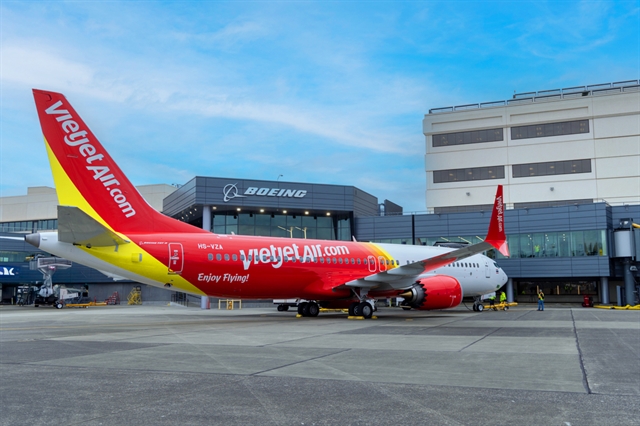 Society
Society


|
| The Cát Linh - Hà Đông metro line started commercial operation from November 6, offering free travel for the first 15 days. — VNA/VNS Photo Thành Đạt |
HÀ NỘI — In its first week of operation, the Cát Linh - Hà Đông metro line conducted 930 trips and carried more than 165,000 passengers free of charge, according to the metro operator.
“The operational results of the 2A line (Cát Linh - Hà Đông) in the past week has been the best that could we anticipated”, said Vũ Hồng Trường, Director-General of Hà Nội Metro.
All of the 930 trips made were operated by the Vietnamese staff at Hà Nội metro.
Starting from November 13, Hà Nội Metro has increased the departure frequency from every 15 minutes to every 10 minutes.
“The change is meant to gradually catch up to the planned schedule while reducing waiting time for passengers”, said Trường.
On the first day of the new schedule, there were 203 trips made on the line carrying 28,035 passengers, an increase of 35 per cent compared to the previous days.
“A positive sign is that people have started using the metro line to go to school or to work, not only for the sake of experience”, said Trường.
Statistics revealed that 27.3 per cent of passengers go on the train from Cát Linh Station, while 24.2 per cent depart from Yên Nghĩa Station. The remaining 50 per cent were evenly distributed among the other stations.
“The number of passengers in different stations is shifting towards a more balanced proportion”, said Trường.
From the past seven days of operation, Hà Nội Metro said the engines and equipment on Cát Linh - Hà Đông are working well and meeting standards. Only the public announcement system sometimes malfunctions due to a long period of inactivity.
“We have developed a coordination mechanism with the contractor in case problems arise during operation. According to the contract terms, the Chinese contractor is responsible for a two-year warranty period, starting from when they handed over the project”, said Trường.
On the first few days, Hanoi Metro recorded that around 10 per cent of the ticket cards issued were lost during the trips. The situation however did improve in the following days.
Regarding passengers bringing food or small bicycles on the train, Hà Nội Metro confirmed that these actions are prohibited according to the metro regulations.
“The good thing is that people are getting used to the metro line. Overcrowding rarely happens anymore. There are almost no cases of people eating or bringing bulky items onto the train”, said Trường.
However, existing problems in the city can affect the metro experience, such as occupied sidewalks, long distances from the parking lots to the stations, and the fact that only one single metro line is currently operational.
According to Dr Nguyễn Xuân Thủy, former Director of the Transport Publishing House, developing a public transport system that reduces individual vehicles still faces many challenges.
He also emphasised the need to establish parking lots to facilitate people’s access to the Cát Linh - Hà Đông metro line.
The current options available now are short-distance public transport and walking. In the long term, it is necessary to design a system of taxis, buses, and express buses to support passengers travelling by the elevated urban rail lines and subways.
Hà Nội's Department of Transport recently issued an official document to Đống Đa, Thanh Xuân, Nam Từ Liêm, Hà Đông, the four districts which the Cát Linh - Hà Đông metro line runs through, to establish temporary parking lots at the metro stations.
Experts also advised that to encourage people to use public transport and form the habit of walking in the city, Hà Nội authorities need to address the issue of occupied sidewalks and respond to the demand for parking lots near Cát Linh - Hà Đông metro stations. — VNS

.jpg)


